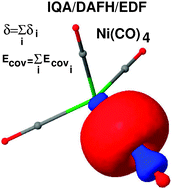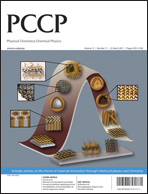Restoring orbital thinking from real space descriptions: bonding in classical and non-classical transition metal carbonyls
Abstract
A combined strategy that unifies our interacting quantum atoms approach (IQA), a chemically intuitive energetic perspective within the quantum theory of atoms in molecules (QTAIM), the domain natural orbitals obtained by the diagonalization of the charge-weighted domain-averaged Fermi hole (DAFH), and the statistical analyses of chemical bonding provided by the electron number distribution functions (EDF) is presented. As shown, it allows for recovering traditional orbital images from the orbital invariant descriptions of QTAIM. It does also provide bonding indices (like bond orders) and bond energetics, all in a per orbital basis, still invariant manner, using a single unified framework. The procedure is applied to show how the Dewar, Chatt, and Ducanson model of bonding in simple transition metal carbonyls may be recovered in the real space. The balance between the number of σ-donated and π-backdonated electrons is negative in classical compounds and positive in non-classical ones. The energetic strength of backdonation is, however, smaller than that of donation. Our technique surpasses conventional orbital models by providing physically sound, quantitative energetics of chemical bonds (or interactions) together with effective one-electron pictures, all for arbitrary wavefunctions.


 Please wait while we load your content...
Please wait while we load your content...